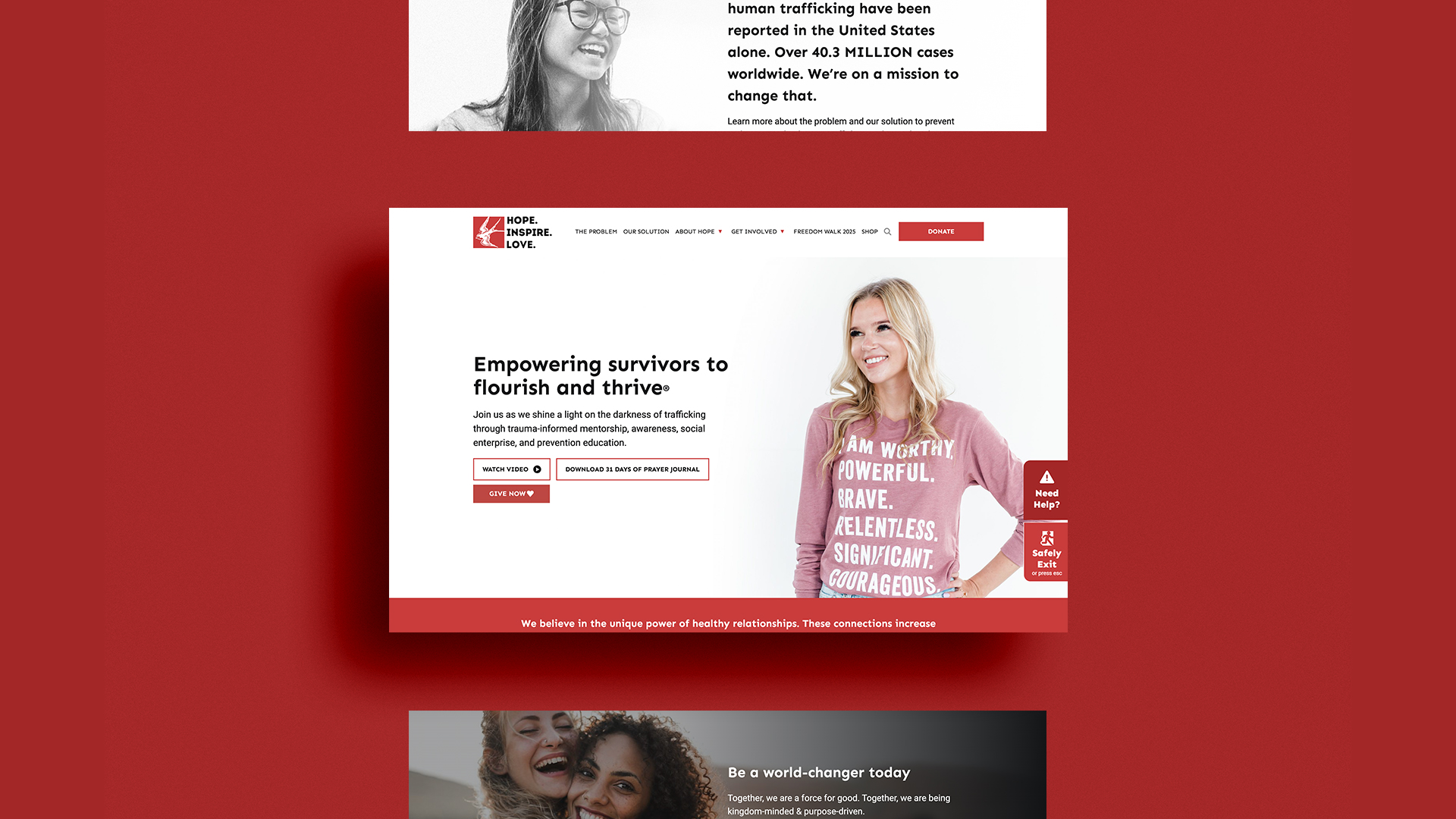People love to give. In the U.S. alone, charitable giving totaled $557.16 billion in 2023. However, there is so much more to fundraising than just asking people to donate. People connect with causes, not donation forms, which means nonprofit marketing strategies must evolve to nurture authentic connections first.
The organizations that thrive don’t just collect money—they build communities around their missions. Modern supporters want meaningful involvement beyond opening their wallets. They crave connection, impact, and belonging. Your marketing can deliver exactly that without constant appeals for funds. With these strategies, you can create deeper relationships with supporters while expanding your mission’s reach organically.
1. Tell Impact Stories that Inspire, Not Just Solicit
Stories move people to action far more effectively than statistics or direct requests. Real outcomes—shared through compelling narratives—give supporters emotional reasons to care. One example is a brand video developed in partnership with Hope Inspire Love, a nonprofit combatting human trafficking. The piece used storytelling and powerful visuals to make the issue tangible and emotionally resonant, helping viewers connect more deeply with the mission beyond a simple call for donations.
Storytelling can take many forms:
- Video testimonials from individuals impacted by a program
- Photo essays documenting community transformation
- Written profiles that highlight personal journeys
The most effective stories focus on specific people and concrete outcomes—such as a student becoming the first college graduate in their family through a scholarship program—rather than simply noting that donations support education.
Gratitude also plays a key role in mission-driven communication. Organizations can publicly acknowledge volunteers, celebrate milestones, and share moments from their history—reminding supporters that their involvement matters and that progress is made together.
Read More: 4 Nonprofit Branding Essentials to Catalyze Your Cause

2. Leverage Educational Content to Build Authority
Knowledge sharing positions a nonprofit as a trusted resource while providing genuine value to its community. Nonprofit marketing strategies centered around education create multiple touchpoints that build long-term engagement and trust. Educational content can include:
- Infographics that visualize critical data points to illuminate the mission’s impact
- Webinars featuring subject matter experts who offer deeper insight into key issues
For example, an environmental organization might publish comprehensive guides on sustainable practices, while a health-focused nonprofit could release infographics that highlight prevention statistics. High-quality, informative content establishes credibility and keeps audiences engaged between fundraising efforts.
Educational experiences also deepen connection and involvement. Virtual workshops, panel discussions, and hands-on service days offer meaningful opportunities for engagement. A youth-centered nonprofit, for instance, might host monthly webinars on mentorship strategies—transforming passive interest into active investment in the mission.
Read More: Nonprofit Branding Tips: Why Your Nonprofit Needs Brand Standards and a Style Guide

3. Activate Social Media to Build Community
Social media is most effective when used for genuine conversation rather than one-way broadcasting. In this space, nonprofit marketing strategies should prioritize engagement over announcements.
- Share behind-the-scenes glimpses of teams preparing for events.
- Run polls to gather input on upcoming initiatives.
- Highlight volunteers and the people who help make the mission possible.
Supporters can also help amplify the message through shareable content. Easily adaptable graphics, hashtag campaigns, and interactive social challenges encourage broader participation. When content is shared by individuals within their own networks, it extends reach through trusted, personal connections, often more effectively than direct organizational messaging.
Read More: 7 Benefits of Social Media for Nonprofits
4. Launch an Email Series That Builds Relationships, Not Just Revenue
Automated email sequences represent some of the most effective nonprofit marketing strategies available today. When structured around relationship-building rather than donation appeals, strategic email campaigns help nurture deeper connections with subscribers. A well-crafted email series can gradually introduce new contacts to the organization’s mission, culture, and impact before making financial requests.
Strong email sequences often begin with welcome emails that communicate mission, vision, and values. These can be followed by impact-driven messages that share results through compelling stories and visuals. Each message should include a variety of calls to action—such as volunteer opportunities, event participation, or ways to amplify the mission—beyond donation requests.
Research shows that 74% of donors expect a welcome email after donating, yet only 57% of nonprofits send them. This gap presents a valuable opportunity to create a positive first impression and stand out.
Including short surveys in email sequences can help gather feedback and preferences, allowing future communications to be tailored accordingly. Personalized emails increase click-through rates by more than 14%, making customization an impactful strategy.
Read More: Amplifying Impact: How a Nonprofit Branding Strategy Boosts Giving

5. Collaborate With Mission-Aligned Partners
Strategic partnerships help extend organizational reach and enhance credibility through association with respected peers. Effective collaborations offer mutual benefit through shared resources, broader audiences, and increased visibility.
Partnering with businesses, community organizations, or faith-based groups that share similar values can lead to impactful joint initiatives, such as co-hosted events, collaborative campaigns, or shared content development.
Successful partnerships often include “win-win” promotions that advance each mission while supporting partner goals. Examples include percentage-of-sales donation structures, joint volunteer opportunities, or co-branded educational content. Digital platforms can further amplify partnership efforts through shared graphics, collaborative blog posts, and coordinated social media strategies.
Read More: How a Marketing Agency for Nonprofits is Different from Other Agencies
Elevate Nonprofit Marketing Strategies With Cross & Crown
Marketing your nonprofit extends far beyond soliciting donations. When supported by intentional strategies like storytelling, education, community engagement, and strong partnerships, marketing becomes a powerful tool for long-term growth and mission advancement.
Cross & Crown partners with nonprofits to help bring that vision to life. Through thoughtful strategy and creative execution, our team is ready to help strengthen supporter relationships and expand mission reach. Contact us today for a personalized consultation.


